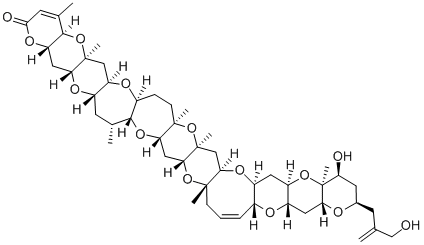Octadecyl acrylate
Synonym(s):Stearyl acrylate
- CAS NO.:4813-57-4
- Empirical Formula: C21H40O2
- Molecular Weight: 324.54
- MDL number: MFCD00015091
- EINECS: 225-383-3
- SAFETY DATA SHEET (SDS)
- Update Date: 2024-12-18 14:07:02

What is Octadecyl acrylate ?
Description
Octadecyl acrylate is a versatile monomer extensively utilized in synthesizing polymer materials. It presents as a colorless and viscoelastic liquid. Its wide-ranging applications encompass coatings, adhesives, sealants, and printing inks, making it an indispensable ingredient in the polymer industry. Notably, Octadecyl acrylate contributes to the production of polymers used in various medical applications and the manufacturing of polyurethane foams. It serves as a valuable model for studying polymerization reactions, offering insights into the properties of polymer materials. During the polymerization process, Octadecyl acrylate undergoes a crucial reaction. This reaction involves the formation of covalent bonds between the monomer molecules. Precisely, addition polymerization occurs, where a monomer molecule adds to a double bond between two other monomer molecules, establishing the covalent bonds that create the polymer material.
The Uses of Octadecyl acrylate
Octadecyl Acrylate is a reagent used in the synthesis of comb-like polymers which are incorporated into waterborne latexes improving barrier properties.
The Uses of Octadecyl acrylate
stearyl acrylate is generally found in combination with other chemicals, it acts as a film former to help maintain moisture in the skin.
What are the applications of Application
Octadecyl acrylate undergoes surface-initiated atom transfer radical polymerization (ATRP) to form poly(octadecyl acrylate). ODA can form copolymers with cinnamoyloxy ethyl methacrylate (CEMA).
Flammability and Explosibility
Non flammable
References
[1] Stephan A. Letts, Tomlinson Fort. “Polymerization of Oriented Monolayers of Octadecyl Acrylate.” Journal of Colloid and Interface Science 202 2 (1998): Pages 341-347.
[2] Miao Yao, Yong He*, Jun Nie. “Can Chain-Reaction Polymerization of Octadecyl Acrylate Occur in Crystal?” Macromolecules 51 10 (2018): 3731–3737.
Properties of Octadecyl acrylate
| Melting point: | 32-34 °C (lit.) |
| Boiling point: | 402.85°C (rough estimate) |
| Density | 0.8 g/mL at 25 °C (lit.) |
| vapor pressure | 0.001Pa at 25℃ |
| refractive index | 1.5344 (estimate) |
| Flash point: | >230 °F |
| solubility | Insoluble in water |
| form | powder to lump to clear liquid |
| color | White or Colorless to Almost white or Almost colorless |
| Water Solubility | 260.9ng/L at 25℃ |
| CAS DataBase Reference | 4813-57-4(CAS DataBase Reference) |
| NIST Chemistry Reference | Octadecyl acrylate(4813-57-4) |
| EPA Substance Registry System | Stearyl acrylate (4813-57-4) |
Safety information for Octadecyl acrylate
| Signal word | Warning |
| Pictogram(s) |
 Exclamation Mark Irritant GHS07  Environment GHS09 |
| GHS Hazard Statements |
H315:Skin corrosion/irritation H319:Serious eye damage/eye irritation H335:Specific target organ toxicity, single exposure;Respiratory tract irritation H411:Hazardous to the aquatic environment, long-term hazard |
| Precautionary Statement Codes |
P261:Avoid breathing dust/fume/gas/mist/vapours/spray. P264:Wash hands thoroughly after handling. P264:Wash skin thouroughly after handling. P271:Use only outdoors or in a well-ventilated area. P273:Avoid release to the environment. P302+P352:IF ON SKIN: wash with plenty of soap and water. P305+P351+P338:IF IN EYES: Rinse cautiously with water for several minutes. Remove contact lenses, if present and easy to do. Continuerinsing. |
Computed Descriptors for Octadecyl acrylate
| InChIKey | FSAJWMJJORKPKS-UHFFFAOYSA-N |
New Products
Tert-butyl bis(2-chloroethyl)carbamate 4-Methylphenylacetic acid N-Boc-D-alaninol N-BOC-D/L-ALANINOL N-octanoyl benzotriazole 3-Morpholino-1-(4-nitrophenyl)-5,6-dihydropyridin- 2(1H)-one Furan-2,5-Dicarboxylic Acid DIETHYL AMINOMALONATE HYDROCHLORIDE 1,1’-CARBONYLDIIMIDAZOLE R-2-BENZYLOXY PROPIONIC ACID 1,1’-CARBONYLDI (1,2-4 TRIAZOLE) N-METHYL INDAZOLE-3-CARBOXYLIC ACID (2-Hydroxyphenyl)acetonitrile 4-Bromopyrazole 5-BROMO-2CYANO PYRIDINE 5,6-Dimethoxyindanone 5-broMo-2-chloro-N-cyclopentylpyriMidin-4-aMine 2-(Cyanocyclohexyl)acetic acid 4-methoxy-3,5-dinitropyridine 1-(4-(aminomethyl)benzyl)urea hydrochloride 2-aminopropyl benzoate hydrochloride diethyl 2-(2-((tertbutoxycarbonyl)amino) ethyl)malonate tert-butyl 4- (ureidomethyl)benzylcarbamate Ethyl-2-chloro((4-methoxyphenyl)hydrazono)acetateRelated products of tetrahydrofuran








You may like
-
 Stearyl Acrylate (stabilized with MEHQ) CAS 4813-57-4View Details
Stearyl Acrylate (stabilized with MEHQ) CAS 4813-57-4View Details
4813-57-4 -
 Octadecyl acrylate CAS 4813-57-4View Details
Octadecyl acrylate CAS 4813-57-4View Details
4813-57-4 -
 1975-50-4 98%View Details
1975-50-4 98%View Details
1975-50-4 -
 2-HYDROXY BENZYL ALCOHOL 98%View Details
2-HYDROXY BENZYL ALCOHOL 98%View Details
90-01-7 -
 2-Chloro-1,3-Bis(Dimethylamino)Trimethinium Hexafluorophosphate 221615-75-4 98%View Details
2-Chloro-1,3-Bis(Dimethylamino)Trimethinium Hexafluorophosphate 221615-75-4 98%View Details
221615-75-4 -
 14714-50-2 (2-Hydroxyphenyl)acetonitrile 98+View Details
14714-50-2 (2-Hydroxyphenyl)acetonitrile 98+View Details
14714-50-2 -
 118753-70-1 98+View Details
118753-70-1 98+View Details
118753-70-1 -
 733039-20-8 5-broMo-2-chloro-N-cyclopentylpyriMidin-4-aMine 98+View Details
733039-20-8 5-broMo-2-chloro-N-cyclopentylpyriMidin-4-aMine 98+View Details
733039-20-8